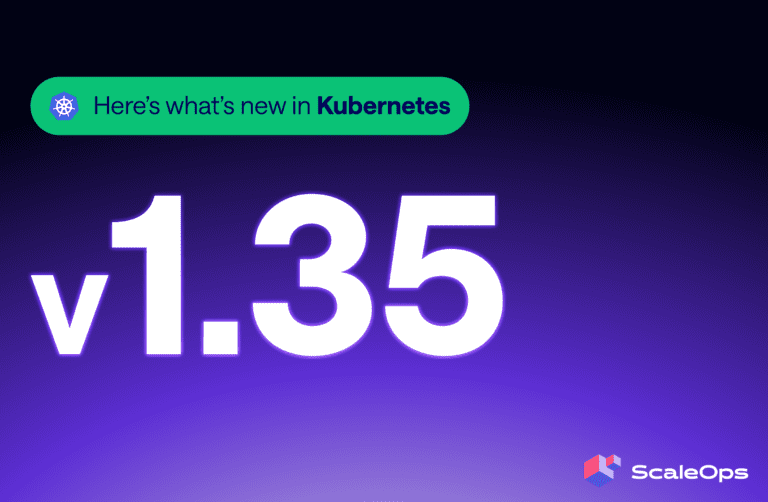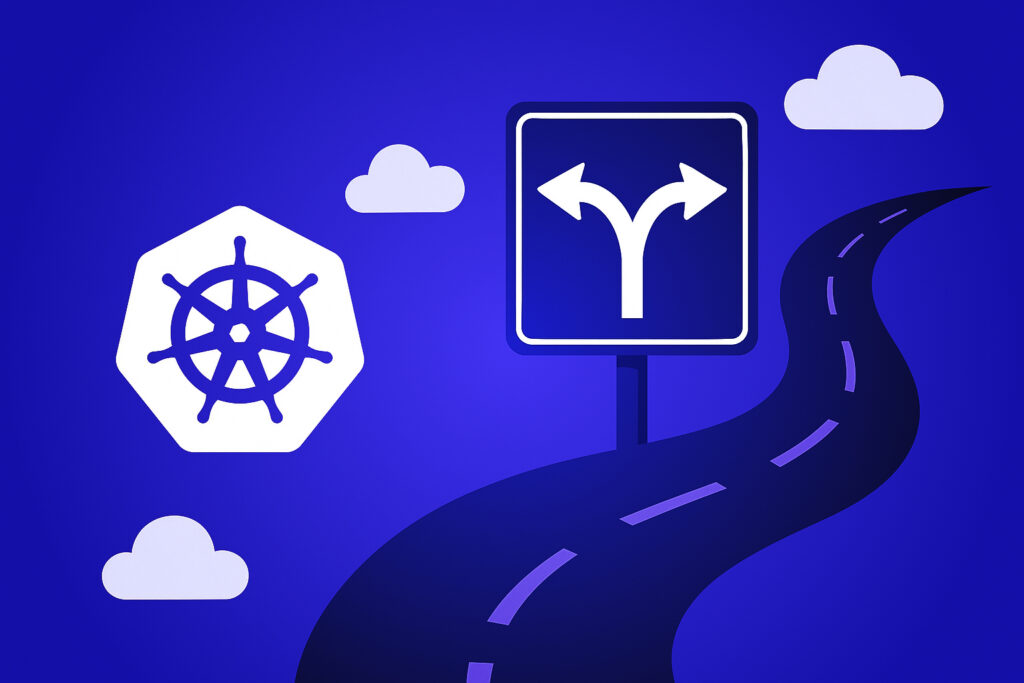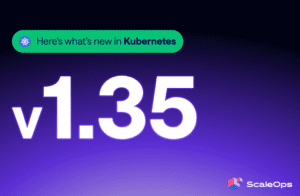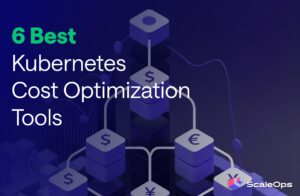The Kubernetes Cluster Autoscaler is a powerful tool for automating compute scaling based on real workload demand. It simplifies infrastructure management by dynamically adjusting node counts, but it’s not without its flaws. Understanding how it works, where it struggles, and what alternatives exist is critical for running resilient, cost-efficient Kubernetes clusters at scale.
Historically, we’ve explored Kubernetes’ built-in autoscaling capabilities, often described as a superpower when properly channeled. In our deep dive on Karpenter vs Cluster Autoscaler, we highlighted how modern autoscaling strategies can dramatically improve efficiency, especially when paired with the right configurations and cloud-native mindset. Tools like Karpenter, while transformative, are currently optimized for AWS-driven Kubernetes environments.
In this post, we’re going to take a similar lens to the Kubernetes Cluster Autoscaler: how it works, where it excels, where it falls short, and how to make the most of it in your environment. We’ll break down its inner workings, explore practical use cases, walk through implementation tips, and evaluate what you should consider when choosing between ScaleOps’ Node Optimization, Cluster Autoscaler, Karpenter.
What is Kubernetes Cluster Autoscaler?
The Kubernetes Cluster Autoscaler is a core autoscaling component designed to manage the number of cluster nodes dynamically. Unlike the Horizontal Pod Autoscaler (HPA) and Vertical Pod Autoscaler (VPA), which adjust pod resources, the Cluster Autoscaler focuses on node-level scaling. It automatically scales up the cluster when pods fail to schedule due to insufficient resources and scales down when nodes are underutilized.
Karpenter vs Cluster Autoscaler
Karpenter is a newer, open-source autoscaler designed to address many of the Cluster Autoscaler’s limitations. While Cluster Autoscaler works closely with Auto Scaling Groups (ASGs) and traditional node groups, Karpenter provisions infrastructure on-demand using cloud provider APIs, enabling faster response times and more flexible instance types.
Cluster Autoscaler vs Other Types of Autoscalers
Kubernetes offers multiple autoscaling mechanisms, each designed to optimize a different layer of the stack. Rather than a one-size-fits-all solution, these tools provide flexibility by targeting specific scaling challenges—whether at the pod level or infrastructure level. Understanding how they differ is essential to designing an autoscaling strategy that aligns with your workload patterns and cost goals.
- Horizontal Pod Autoscaler (HPA): Adjusts the number of pod replicas based on observed metrics like CPU or memory utilization. Ideal for scaling stateless applications in response to fluctuating demand.
- Vertical Pod Autoscaler (VPA): Recommends or applies changes to pod resource requests and limits, helping ensure that workloads aren’t under- or over-provisioned at the container level.
- Cluster Autoscaler: Operates at the node level, automatically scaling the number of nodes in the Kubernetes cluster based on pod scheduling needs and available capacity.
Each autoscaler plays a distinct role—and often, they work best in tandem. For example, HPA may increase the number of pods, triggering the Cluster Autoscaler to add nodes when existing ones can’t accommodate the new replicas.
How Does Kubernetes Cluster Autoscaler Work?
The Cluster Autoscaler runs a control loop that continuously monitors the state of the cluster—looking for unschedulable pods or underutilized resources—and makes scaling decisions based on defined thresholds, constraints, and policies.
Below, we’ll dive into the different ways in which the Cluster Autoscaler automatically scales systems, including how it handles scale-ups, scale-downs, and node group rebalancing, all while respecting Kubernetes-native constraints like taints, tolerations, and disruption budgets.
Scaling Up
When pods can’t be scheduled due to insufficient resource requests (CPU, memory), the Cluster Autoscaler checks if adding nodes from one or more auto scaling groups can help. If so, it requests a scale-up operation, and the cloud provider provisions additional cluster nodes.
Scaling Down
When nodes are significantly underutilized—often holding only empty pods or workloads that can be moved—the autoscaler may trigger a scale-down. It evicts pods and decommissions nodes to maintain efficiency, though this process is conservative by design.
Node Group Balancing
With multiple node groups, balancing workloads becomes crucial. The Cluster Autoscaler can redistribute pods across groups to ensure cost and performance optimization.
Respecting Constraints
Cluster Autoscaler honors PodDisruptionBudgets, taints, tolerations, and pod resource requests, ensuring workloads land only on compatible nodes and that scale-down operations don’t violate safety rules.
Limitations of Kubernetes Cluster Autoscaler
While the Kubernetes Cluster Autoscaler remains a popular choice for dynamic infrastructure scaling, it’s important to recognize its design tradeoffs. Originally built to work closely with auto scaling groups and traditional node pools, the Cluster Autoscaler prioritizes stability and cloud-native integration—but that often comes at the expense of speed, flexibility, and efficiency.
By contrast, newer tools like Karpenter aim to overcome these gaps with a more modern, cloud-aware architecture.
Here’s a side-by-side look at where the Cluster Autoscaler falls short—and how Karpenter addresses many of these limitations:
| Limitation | Cluster Autoscaler | Karpenter |
| Scaling Strategy | Reactive: responds only after unschedulable pods appear | Proactive: anticipates demand and provisions nodes faster |
| Context Awareness | No application-level insight or SLO integration | Supports contextual inputs and workload types |
| Provisioning Latency | Tied to ASG cold starts and scaling delays | Direct API calls for fast instance launches |
| Dependency on ASGs | Requires ASG tagging and tight integration | Stateless, flexible provisioning across instance types |
| Node Group Behavior | Operates at the node group level; can result in inefficient bin-packing | Works independently of node groups; optimizes for workload fit |
| Cloud Provider Coupling | Deeply integrated with AWS/GCP autoscaling primitives | Optimized for AWS but more decoupled from ASG constraints |
| Scale-Down Behavior | Conservative and slow to avoid disruption | Smarter deprovisioning based on workload history |
| Support in Regulated Environments | Harder to use in air-gapped or tightly governed environments | Not air-gapped yet, but more modular in design |
| Observability & Tuning | Limited built-in visibility; tuning can be opaque | Exposes real-time provisioning decisions and justifications |
Both tools have their place. If you’re running a highly regulated, multi-cloud environment, or require deep integration with cloud-native autoscaling, the Cluster Autoscaler might still be your best bet. But if you’re seeking faster provisioning, smarter decision-making, and more efficient instance selection, especially on AWS, Karpenter is worth a closer look.
How to Troubleshoot Kubernetes Cluster Autoscaler
When the Cluster Autoscaler doesn’t scale up or down as expected, the root cause often lies in a mix of Kubernetes misconfigurations and cloud infrastructure constraints. Troubleshooting effectively means understanding where the autoscaler gets blocked, and which part of the system is responsible.
1. Review Cluster Autoscaler Logs
The autoscaler emits detailed logs that explain why it made or skipped certain scaling decisions. These logs often reveal if a pending pod is truly unschedulable, if a node group has hit its limits, or if a disruption policy blocked a scale-down. Reviewing logs is the most direct way to understand the autoscaler’s internal decision-making and detect silent failures.
2. Validate Resource Requests and Limits
Cluster Autoscaler bases all decisions on declared resource requests, not real-time usage. If a pod requests more CPU or memory than any node in your cluster can offer—even if it doesn’t actually need that much—it won’t be scheduled, and the autoscaler may be unable to find a suitable node group to scale. This is especially common with overly aggressive default values or inconsistent request settings across teams.
It’s also important to ensure that all pods declare both CPU and memory requests. Pods with missing requests may be treated as if they require zero resources, which can result in scheduling failures or unpredictable scale behavior. This is where tools like the Vertical Pod Autoscaler (VPA) can help suggest or enforce accurate resource requests.
3. Check ASG Discovery Tags and IAM Permissions
In cloud environments like AWS, the Cluster Autoscaler relies on auto scaling groups and proper tagging to discover which node groups it can manage. If the autoscaler can’t see the group, it won’t attempt to scale it. Similarly, if the autoscaler’s IAM role lacks the necessary permissions to modify ASGs or retrieve instance data, scale operations will silently fail.
Misconfigured discovery tags or overly restrictive IAM policies are among the most common causes of Cluster Autoscaler failures, especially during initial setup or after infrastructure changes.
4. Inspect PodDisruptionBudgets and Scheduling Constraints
The autoscaler is designed to scale down conservatively. If a node is underutilized but hosts a pod that’s protected by a PodDisruptionBudget (PDB) or uses strict affinity rules, the autoscaler may skip it to avoid violating safety constraints.
Additionally, taints, tolerations, and affinity settings can block pods from being rescheduled during a scale-down, preventing nodes from being drained, even when they appear idle. Understanding these constraints and tuning them for your workloads is essential for enabling effective scale-downs.
Utilization and Cost Impact with Cluster Autoscaler
While autoscaling reduces costs in theory, misconfigurations can lead to over-provisioning or wasted empty nodes. Balancing existing nodes before scaling up is key. Analyze cost using cloud billing metrics and tools like Kubernetes VPA and Kubecost.
A Tl;dr Best Practices Checklist for Using Cluster Autoscaler
- Define accurate resource requests and limits
- Enable detailed monitoring and logging
- Use multiple node groups for cost-efficient heterogeneity
- Tune scale-up and scale-down thresholds
- Use PriorityClasses and PodDisruptionBudgets to define eviction logic
- Regularly audit default values and override them when needed
Open-Source Alternatives to Kubernetes Cluster Autoscaler
While the Kubernetes Cluster Autoscaler is the default choice for many teams, it isn’t the only open-source solution available. Depending on your infrastructure goals, workload patterns, or cloud provider constraints, one of the following OSS tools may better align with your environment.
- Karpenter: Backed by AWS, Karpenter is a modern autoscaler that provisions nodes directly through cloud APIs, bypassing the limitations of traditional Auto Scaling Groups. It offers faster provisioning, dynamic instance type selection, and intelligent placement—but today, it’s best suited for teams operating primarily in AWS environments.
- Virtual Kubelet: This project connects Kubernetes to external compute providers like Azure Container Instances or AWS Fargate. It’s designed for workloads that benefit from ephemeral infrastructure or hybrid Kubernetes setups. While not a direct replacement for Cluster Autoscaler, it introduces elasticity for edge or bursty use cases.
- Custom Schedulers & Extensions: Some engineering teams extend the Kubernetes scheduler with custom logic or integrate tools like descheduler, kube-downscaler, or even event-driven frameworks (e.g., Knative) to tailor scaling to their unique application lifecycle and cost requirements.
Each of these OSS options offers specific strengths, whether you’re optimizing for speed, flexibility, or workload fit. But they also come with operational complexity, most require thoughtful integration and ongoing tuning to fully realize their potential.
Smarter, Context-Aware Autoscaling Built for Native Integration with Cluster Autoscaler
For teams looking for production-grade autoscaling without the operational burden of managing custom schedulers or open-source complexity, commercial solutions provide opinionated, cost-efficient scaling out of the box.
ScaleOps enhances, rather than replaces, the Kubernetes Cluster Autoscaler. It adds a context-aware decision layer that allows teams to scale more efficiently, using real-time data and policy-driven automation.
Key benefits include:
- Real-time cost awareness: ScaleOps selects optimal instance types and sizes based on pricing, availability, and workload fit, ensuring autoscaling doesn’t result in surprise cloud bills.
- Workload intelligence: By incorporating traffic patterns, service-level objectives, and scheduling constraints, ScaleOps makes better-informed scale-up and scale-down decisions.
- Aggressive, safe scale-down: Unlike the conservative defaults of Cluster Autoscaler, ScaleOps actively reclaims underutilized nodes with built-in safeguards.
- Seamless integration: ScaleOps is cloud-agnostic and supports air-gapped, hybrid, and multi-cloud environments, extending Kubernetes-native scaling to regulated and on-premises use cases.
For organizations managing multi-tenant clusters, large-scale environments, or mixed workloads, ScaleOps delivers out-of-the-box efficiency while maintaining Kubernetes-native workflows. It’s autoscaling that adapts to how your business and infrastructure actually operate.
Cluster Autoscaler: Do or Do Not, There is No Try
The Kubernetes Cluster Autoscaler remains an essential building block for managing dynamic workloads in cloud-native environments. But it’s not a one-size-fits-all solution. Understanding its limitations, tuning it carefully, and evaluating alternatives like Karpenter or ScaleOps are key to building resilient, cost-effective infrastructure.
Whether you’re running heterogeneous workloads, tuning pod resource requests, or optimizing across multiple node groups, success with autoscaling starts with understanding the full lifecycle, from scaling triggers to cloud provisioning delays. Don’t just enable the Cluster Autoscaler, make it work smarter for your environment.























